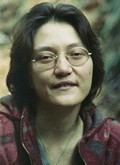Name Misha Mahowald | Died 1996, Zurich, Switzerland | |
 | ||
Books An Analog VLSI System for Stereoscopic Vision | ||
Dr misha mahowald witi hall of fame 1996 induction video women in technology international
Michelle (Misha) Mahowald (1963–1996), born in Minneapolis, Minnesota, was a computational neuroscientist in the emerging field of Neuromorphic Engineering. In 1996 she was inducted into the Women in Technology International Hall of Fame for her development of the Silicon Eye and other computational systems.
Contents
- Dr misha mahowald witi hall of fame 1996 induction video women in technology international
- Life and career
- Publications
- 2000
- 1999
- 1998
- 1996
- 1995
- 1994
- 1989
- References
Life and career
As a young girl, Mahowald used the name Misha (short for Michelle) as a nom-de-plume in her diary, but later adopted it as her official name. After graduating high school, she attended the California Institute of Technology, graduating with a degree in biology in 1985. She continued at Caltech as a PhD student in Computation and Neural Systems under the supervision of Professor Carver Mead, a specialist in computer science. For her thesis, Mahowald created her own project by combining the fields of biology, computer science, and electrical engineering, to produce the 'silicon retina.'
The silicon retina used analog electrical circuits to mimic the biological functions of rod cells, cone cells, and other non-photoreceptive cells in the retina of the eye. The invention was not only highly original and potentially useful as a device for restoring sight to the blind, but it was also one of the most eclectic feats of electrical and biological engineering of the time. This remarkable example of engineering earned Mahowald a well-deserved reputation as one of the most famous female engineers of her age. Her work has been considered "the best attempt to date" to develop a stereoscopic vision system. She was awarded a doctorate in computational neuroscience in 1992, and her invention of the silicon retina and the silicon neuron earned her articles in the prestigious scientific journals Scientific American and Nature, as well as four patents and the Clauser Prize for her dissertation. A revised version of her dissertation [2] was subsequently published in book form.
Mahowald then re-located to the University of Oxford for one year to do a post-doctoral fellowship with eminent neuroscientists Kevan Martin and Rodney Douglas. After the completion of this project, Mahowald moved to Zurich, Switzerland to help found the Institute of Neuroinformatics (Institut fur Neuroinformatik) at the University of Zurich and ETH Zurich, a research institution whose mission is to discover the key principles by which brains work and to implement these in artificial systems that interact intelligently with the real world.
In 1996 she was made a member of the Women in Technology International (WITI) Hall of Fame.
Mahowald died in Zurich at the end of 1996, at the age of 33.
Aspects of her work and personal life have been described in a book about the creation of the vision sensor company Foveon.
Publications
The following is a list of Misha Mahowald's scientific publications from 1989 onwards. Her name continued to appear on publications after her death in recognition of the strong contributions she had made to those works while still alive.
